|
|
Attention: This page exists for historical purposes. The contents are out of date. See Robot Room for the latest site. |
CHIBOTS MEETING: JUNE 10, 2001 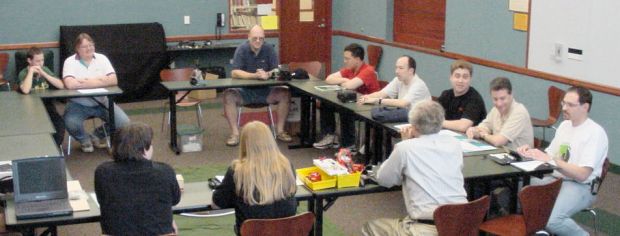 Clockwise: (upper-left) Nick Boerema, Clifford Boerema, Tom Gralewicz, Peter Zuo, Jim Munro, John Patrick, Jim Fiocca, David Wooden, Don Kerste, Tracy Lunquist, and Mike Bakula. Present but not pictured: Brian Schwartz, Leon Sorokin, and David Cook (photographer) A beautiful spring day (Summer Solstice is June 21) in Chicago reduced the attendance to fourteen, which was just the right size for chatting. We welcomed a new member, Tracy Lunquist. 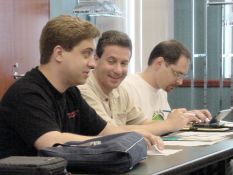
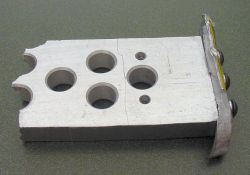 John Patrick John provided a skimmed overview of how Team Saber fared in BattleBots. With a smile and good humor, he passed around a severely damaged piece of thick aluminum that previously was an integral part of Team Saber's robot. 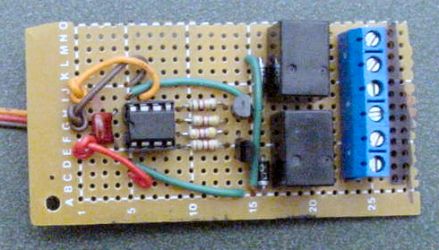 John created a custom radio-control extension. When various buttons are pressed on the transmitter, it engages relays on the robot. 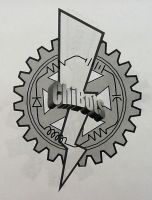
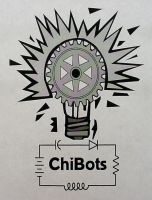
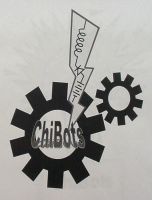 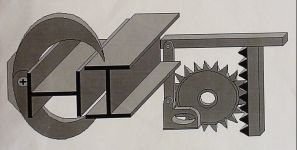
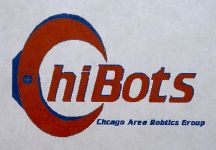 Logos Five more logos were presented. ChiBots is fortunate to have so many creative people volunteering and contributing to the group. 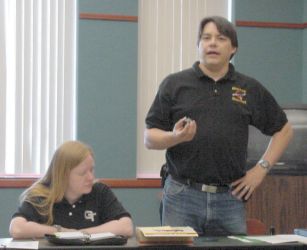
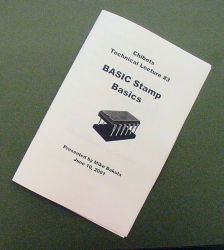 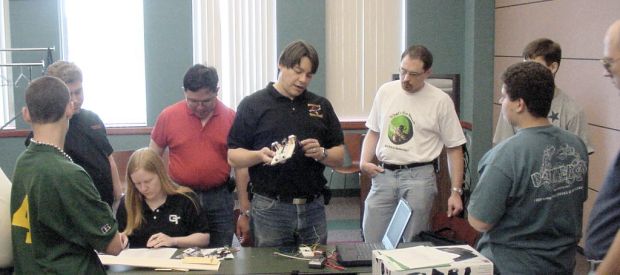 Mike Bakula and Tracy Lunquist Mike gave a great presentation about the Parallax BASIC stamp. Besides bringing all of the tools and materials to demonstrate, Mike and Tracy made a fantastic twenty-six-page presentation booklet! Everyone got a copy. 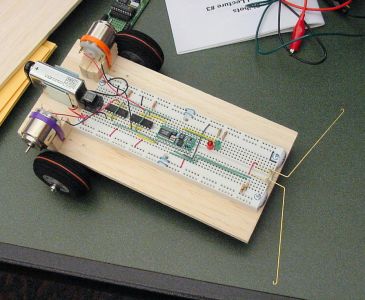 (Click the picture above to see an action clip) The example robot was inexpensive (under $100) and could easily be built by a beginner in a day. 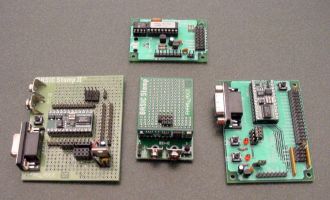 Jim Munro brought a small collection of BASIC Stamps and associated prototyping boards. 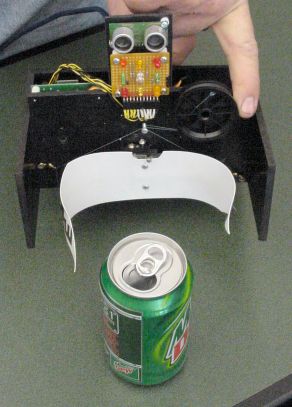
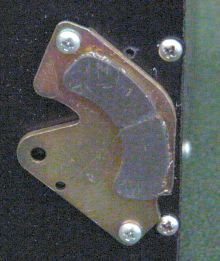 Tom Gralewicz Tom brought the can grabbing attachment from Ortho of Borg (presented last month). He purchased a plastic sign from a local hardware store and wrapped it around a can. After cooking it in boiling water for 30 seconds, the plastic accepted the new shape while still retaining it's flexibility. The complete can attachment is an independent entity controlled via serial. It mounts to Ortho with magnets! 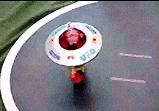 (Click the picture above to see a walking robot) Tom demonstrated a ready-to-run robot that uses a rotating mass to balance. A pair of gear motors and spherical wheels allows the robot to stand up, walk a step at a time, turn, spin, drive forward and reverse. 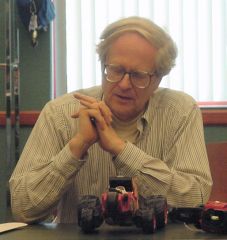 Don Kerste Don suggested everyone take a look at an RC robot car on sale from Radio Shack for $20. 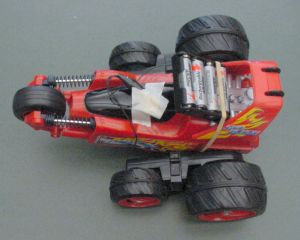
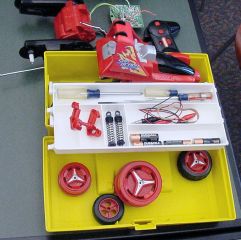 After dissection, the parts available are: three motors, a RC receiver (and remote), and three H-bridges (two of which are heavy duty). 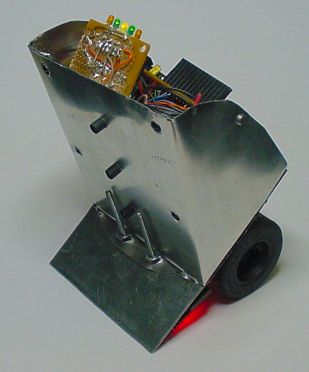 David Cook David brought a mini-Sumo ring, Pound Of Wood, and Bugdozer to practice mini-Sumo. Bugdozer's cowl is in the process of being upgraded. It now includes four opponent sensors and LED indicators, and both batteries can now fit below. See you next month! ChiBots Meeting Minutes for Sunday, June 10, 2001 by David Wooden I. Members present at the meeting John Patrick, President II. Agenda
III. Introductions Tracy Lundquist IV. Old Business
V. New Business No new business VI. Technical Presentation BASIC Stamp Basics, given by Mike Bakula VII. Mini-Sumo Demonstration David Cook gave a presentation and demonstration about Mini Sumo. David brought in his Mini-Sumo ring and his Mini-Sumo robot, Bugdozer. David explained in detail how matches were held. Mini-Sumo robots must fit into a box 10 cm by 10 cm and weigh no more than 500 grams. VIII. Close End of official business IV. Show and Tell Don Kerste gave a brief demonstration of Turmoil, a RC controlled toy available at Radio Shack for $20.00. This toy contains many useful parts, including: 3 H-bridges; 3 motors (2 “heavy” drive motors); 49-MHz, 6-function transmitter, and receiver. |
